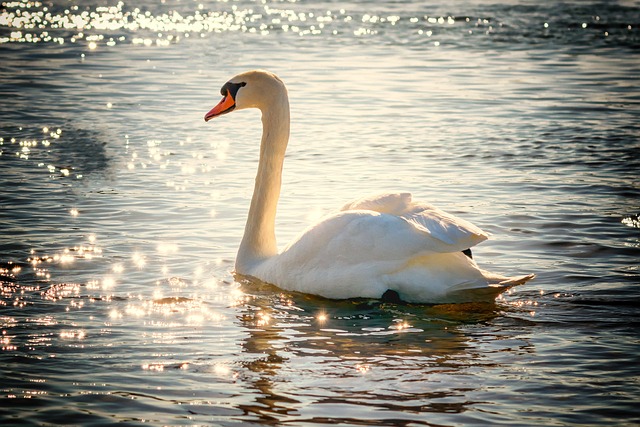Gathering In
April 7, 2023

Last evening Michelle and I went in search of swans. These last weeks of March and first weeks of April are typically the time when the trumpeter swans use the farm fields in northeastern Wisconsin, flooded by melting snow, as an oasis to rest up from the first stage of their migration flight and ready themselves for the rest of their journey. Soon, even before all the snow and ice has receded from our area lakes, they will resume their migration push far up into the Canadian prairie, even as far as Hudson Bay.
The drive proved to be great timing. Once we got in the vicinity of the Wolf River, a substantial waterway that provides plenty of food, protection and reliable landmarks, nearly every farm field seemed to hold birds. Sometimes it was a knot of a dozen swans packed tightly into a puddle that you could easily throw a stone across. Sometimes it was a large area of several adjoining mucky farm fields with enough standing water that hundreds of swans were spread out from fence line to fence line.
We gravitated to our favorite place for swan viewing, the Bergstrom wildlife viewing area between Black Creek and Shiocton. There is a viewing platform available, but we drove past that to the north end of the property. On the east side of the road there is a flooded area that is probably a quarter mile across. The big birds like this place because there is enough water for them to land and take off. Swans are one of the largest and heaviest flighted birds in the world. They need a lengthy runway for takeoffs and landings.
There were about 25 swans mixed in with four times that many Canada geese and maybe 50 sandhill cranes. We pulled over to the narrow shoulder of the road and opened the car windows. The sounds of migration at evening immediately washed over us along with the chilled April air. Every bird already landed seemed to be calling, and the sky was also alive with “woots” of swans, “honks” of geese and “trumpets” of cranes.
The day had been overcast – an appropriate term when the sky is blanketed by cloud cover so expansive that no individual cloud is discernable. But now, although still no opening had appeared in them, the western horizon had thinned enough that the clouds there were ignited by the setting sun and glowed magenta.
As the sun slipped silently lower, now kissing the horizon, swans appeared two by two, dropping down to the water. Geese and cranes were also gathering. Every time another pair or small bunch set their wings for descent, their brethren, already settled, suddenly burst into chorus as if cheering their fellow birds of a feather, “Here, land here!”. It almost seemed they were in competition.
The magenta melted into a softer pink and then the pink seemed to be gathered back in by the thickening gray. The redwing blackbird song, just urgent and scattered all through the trees on the opposite side of the road were also gathered into silence. Two muskrats glided in towards the bank, then quietly slipped beneath the surface as if the water had gathered them in.
The last of the fading daylight was gathered into deepening nightfall. Here and there a few birds were setting wings and settling in, but the skies had gathered most of them to rest. Even the raucous calling of the swans, cranes and geese were being gathered into a hush and quieted into a gabbling murmur. End of this day, or perhaps winter itself was being gathered in to the embrace of spring.
We too, had been gathered into the quieting, the resting, the darkening. “All is well, all is well, with my soul.”
His Peace,
Deacon Dan
